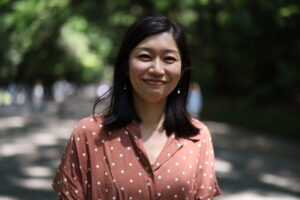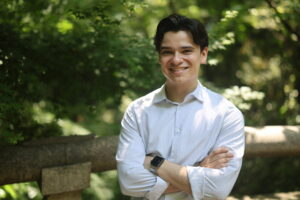On October 13, the curtain was at last drawn on Expo 2025, after 6 months of service and some 29 million guests. Despite this number, it would seem that many folks both inside and out of Japan are still scratching their heads as to what this expo thing was all about.
Let’s start from the basics.
The theme for the second world’s fair to be held in Osaka was “Designing Future Society for Our Lives,” with early coverage building anticipation for the unveiling of new technology the likes of which you’d only see in a sixties sci-fi novel: a heart produced using stem cells, bioluminescent plants, electric buses, and more. Many of these technologies could be seen at popular government-operated pavilions and at those of large Japanese companies–like Pasona, Sumitomo, and Bandai. Meanwhile, at so-called “Signature Pavilions,” a handful of renowned Japanese creators and thinkers, such as anime giant Shoji Kawamori and roboticist Hiroshi Ishiguro, were each given free reign to express their visions of mankind’s future.
It can be argued, though, that the meat of the Expo experience was in the international pavilions–this is the World’s Fair we’re talking about after all. And if we throw in all of the participant countries, international organizations, and regional exhibitions, we’re easily clearing 160 some-odd presentations. That’s a lot of meat, far too much for one day or even one travel consultant. That’s why we’re here with Expo reports from not one but two of our staff members, Saori and Joe.

I went to the Expo held in Nagoya, Aichi back in 2005; I really had a great time as it was my first time to visit such a spacious venue, the pavilions were colorful and unique making it fun to just walk around, and I was able to see and learn about countries I’d never been to nor heard of. So when I heard the Osaka Expo would be happening, I was hoping for a chance to go (although I knew it would be difficult to get around with my four year old). After the rainy season in late spring and the heat during the summer, my family and I decided to go in early September in hopes to avoid the crowds.
It was a cloudy weekday with a rain forecast. To enjoy a full day at the Expo, we got to Osaka the day before and took the train to Yumeshima Station. The crowd wasn’t too bad, and we got there in time for our time slot, where we were welcomed by an hour-long wait just to get inside. There was nothing wrong, just that the luggage security process took so much time.
Our to do list:
#1. Meet Myaku Myaku
#2. Enjoy ice cream
#3. Visit a pavilion or two
Results:
#1. A one hour wait to meet Myaku Myaku, Expo’s mascot. The pavilion was only offered a meet-and-greet and photo session with him so it was quite small but enough to excite everyone when he came out from behind the curtains to greet us. Everyone had 10 seconds with him, which was enough to high-five and take photos. It was short, but for me, worth the wait.
#2. Ice cream at Seven Eleven, but it was a 20 minute wait on a weekday in September so I can’t imagine how long visitors waited during the summer. I had done a lot of research on what kind of ice cream you can find at the expo and was looking forward to getting Turkish ice cream (it’s a unique ice cream that stretches real long), but unfortunately the line was too long.
#3. Three pavilion visits; UAE, Earth at Night, and Brunei, all because there was no wait. They didn’t leave much of an impression though, as they focused on exhibiting and nothing hands-on. I also visited the Playground of Life: Jellyfish Pavilion’s outdoor space which was perfect for children, as it displayed playful musical instruments.
One pavilion I really wanted to visit was Kuwait, because it featured the desert, and I had heard it seems like you’re really there and able to touch the sand. But waiting in line with a four year old for more than an hour was hopeless so I had to give up. (For Myaku Myaku I waited by myself, while my child and husband went around other small pavilions.)
My overall insight:
It would have been an overwhelming experience though to visit from a different country and go through the hassle of applying for pavilion slots and all, but overall, just walking through the venue and seeing that so many different countries gathered to showcase the wonders of their countries was worthwhile, and I’m happy I went!

Having been warned at length by my coworkers, I by all means intended to come to Expo prepared. I intended to snag reservations for a few of the more popular pavilions–a reportedly challenging task even for those with ample prep time. I intended to pack some snacks and check the weather. But ultimately I did none of these things.
My Expo visit was the result of a spur-of-the-moment decision. Universal Studios Japan or Osaka Expo? As the adage goes, you only live once, and surely this applied to the first World’s Fair to be held in Japan in 20 years. Surely.
It was around the time I stepped out of the long, theme-park-like tunnel of Yumeshima Station that I began to wonder whether we should stop using that phrase. Thousands of armpit stains and sweat-beaded foreheads stretched out before me, all the while instilling within me the strange conviction that I’d somehow slipped into the summer Olympics, not the World’s Fair. Turns out my Expo visit coincided with record heat.
By the time I finally managed to get into the venue, I was starting to feel dizzy. My girlfriend suggested we take a break, but I insisted we march onwards. This was Expo, afterall…
What awaited us were lines for just about everything. Lines for the pavilions, lines for food, lines for the bathroom. The scale of these lines was beyond anything I had imagined, let alone experienced before then. Many popular pavilions adopted full-reservation systems, while others, like those of France and the U.S. allowed non-reserved guests to queue for hours on end.
With no escape from the heat, it didn’t take long for my dizziness to turn into outright nausea, and thus my first hour or so at Expo was spent nursing heatstroke with a peanut butter smoothie beneath the wings of the Kuwait pavilion. The smoothie–while maybe quadruple the price of the standard smoothie in Japan–might as well have been ambrosia.
Even after recovering, the lines showed no sign of thinning, but there was still hope: the Commons pavilions. Together, these giant halls housed a vast collection of mini-exhibits for countries and regions around the world.
The most interesting thing here was the diversity of the participants’ approaches to the strict space limitations. Many chose to educate guests on their history, language, and traditions. Nearly as many used their precious bit of Expo real estate to sell representative products from back home. Some chose to focus on promoting domestic infrastructure, agriculture, and industry, where others looked outwards with exhibits on trade and geopolitics. And a select few, like the war-stricken Ukraine, adopted a minimalist, abstract approach designed to evoke a specific mood or message.
Speaking of messages, our next destination and the longest line we waited in that day, the infamous Turkmenistan pavilion, provided a fascinating bit a propaganda for guests looking to experience the closest thing to a North Korea pavilion. While propaganda is par for the course at the World’s Fair, where countries essentially compete to out-promote one-another, Turkmenistan faced a unique challenge in having to out-promote its own reputation as an authoritarian dictatorship with a long rap sheet of human rights abuses.
Upon entering the lavishly decorated pavilion, I was greeted by the penetrating gaze of the country’s current despot, President Serdar Berdimuhamedow. His eyes followed me into the next room and remained there for the duration of a promotional video touting the indisputable–and very likely AI-generated–splendor of mighty Turkmenistan and its white-marble capital. The experience called to mind Paul Verhooven’s film adaptation of Starship Troopers (1997), which relentlessly satirizes a fictional fascist government, except this was the real deal.
Hot off the heels of the video, the second floor was surprisingly tame, with exhibits on domestic consumer products, traditional clothing, and the country’s ecology. Of particular note was a pile of books on foreign languages, such as Japanese and English, that looked like they were thrown together in Microsoft Word in a matter of days. There was something nostalgic about the decidedly plain, unedited make of these books, so rare in this era of ChatGPT and beginner-friendly graphic design tools. However, this wasn’t enough to prevent the exhibit floor from blending in with the Commons we had visited beforehand.
The sun had started to set, and things were winding down on Yumeshima. We were able to get into a few pavilions, both large and small, including those of UAE, Vietnam, and Cambodia. All presented a wide breadth of information similar to the second floor of Turkmenistan and many of the Commons exhibits, and before we knew it, our “Countries to Visit Someday List” had expanded significantly.
With these last few pavilions, we had had more than enough Expo for one day. After a long debate over whether to eat dinner at Expo or somewhere in Osaka, we settled on the latter and departed from Yumeshima just as night fell. This proved to be a wise decision, as a sudden power outage stranded nearly 40,000 people on the manmade island just a few hours later.
So was Expo worth my time? Yeah, I’d say so. For one, it was an instructional experience in the same way that a child who burnt their hand on a hot stove won’t soon repeat their mistake; reserve, reserve, reserve, and bring lots of snacks and drinks. This on-the-ground knowledge made arranging Expo visits for our guests much much easier.
For another, the diversity of approach seen in Expo’s international pavilions reinforced something I’d felt time and again in my travels across Japan: in promoting a place–one that envelops entire communities, their people, and histories both shared and individual–there is a fine balance to be reached between narrative and explanation, between emotion and logic. While some introductions are enhanced by detail, others simply require a feeling or a sense of, well, place.
<Author>
Saori Futsukaichi & Joseph Bayliss
Travel Consultants at WaWo Japan Travel
